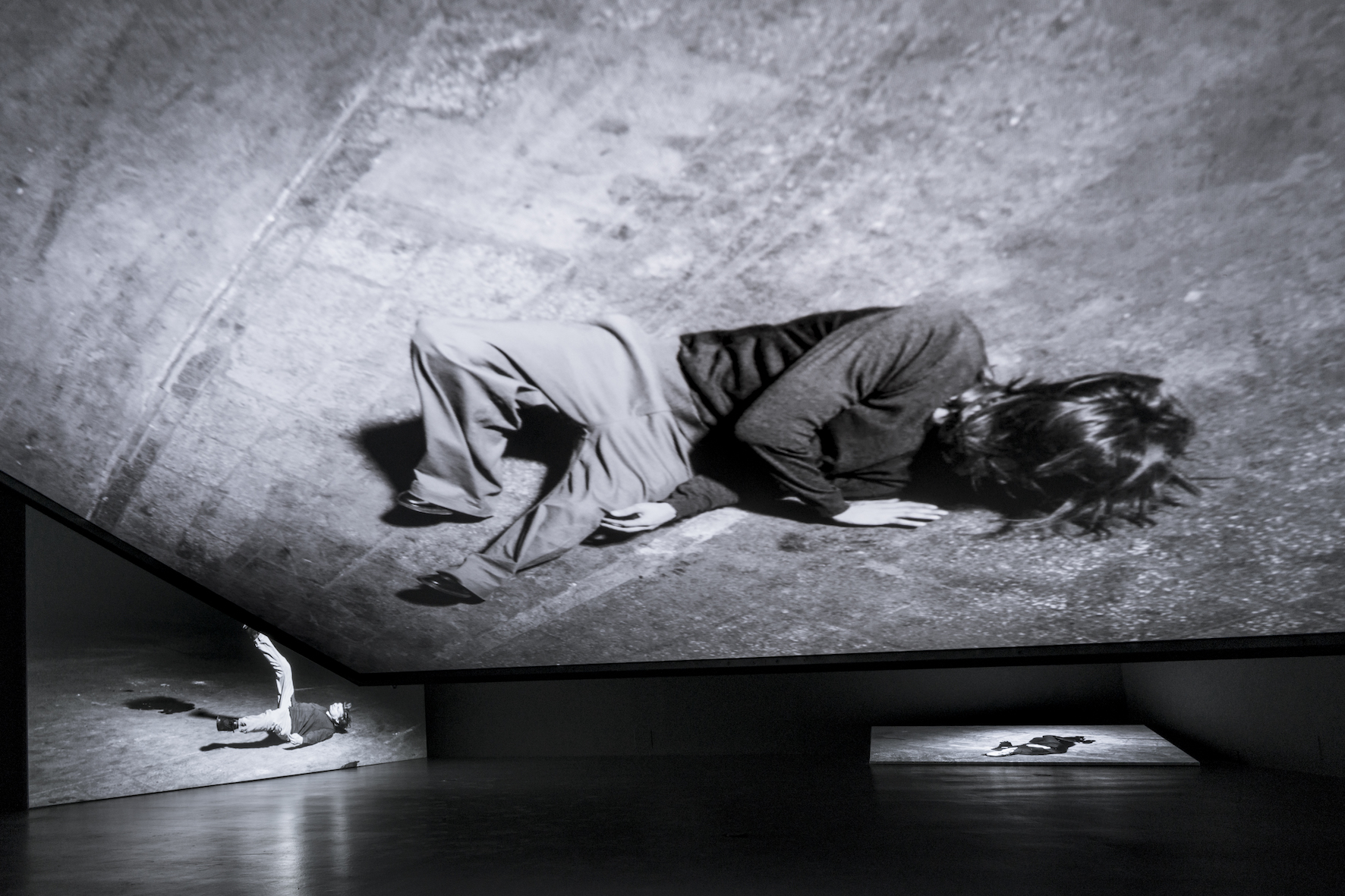
spill
,Grzegorz Stefanski
, 2018, three-channel video installation, HD, 10’00”, dimensions variable, no sound, looped."spill" is a multi-channel video installation focusing on the fractions-of-a-second short inertia that the human body experiences during a fall. The installation oscillates between photography and film, inspiring a reflection on the meaning of a collapse in contemporary culture.
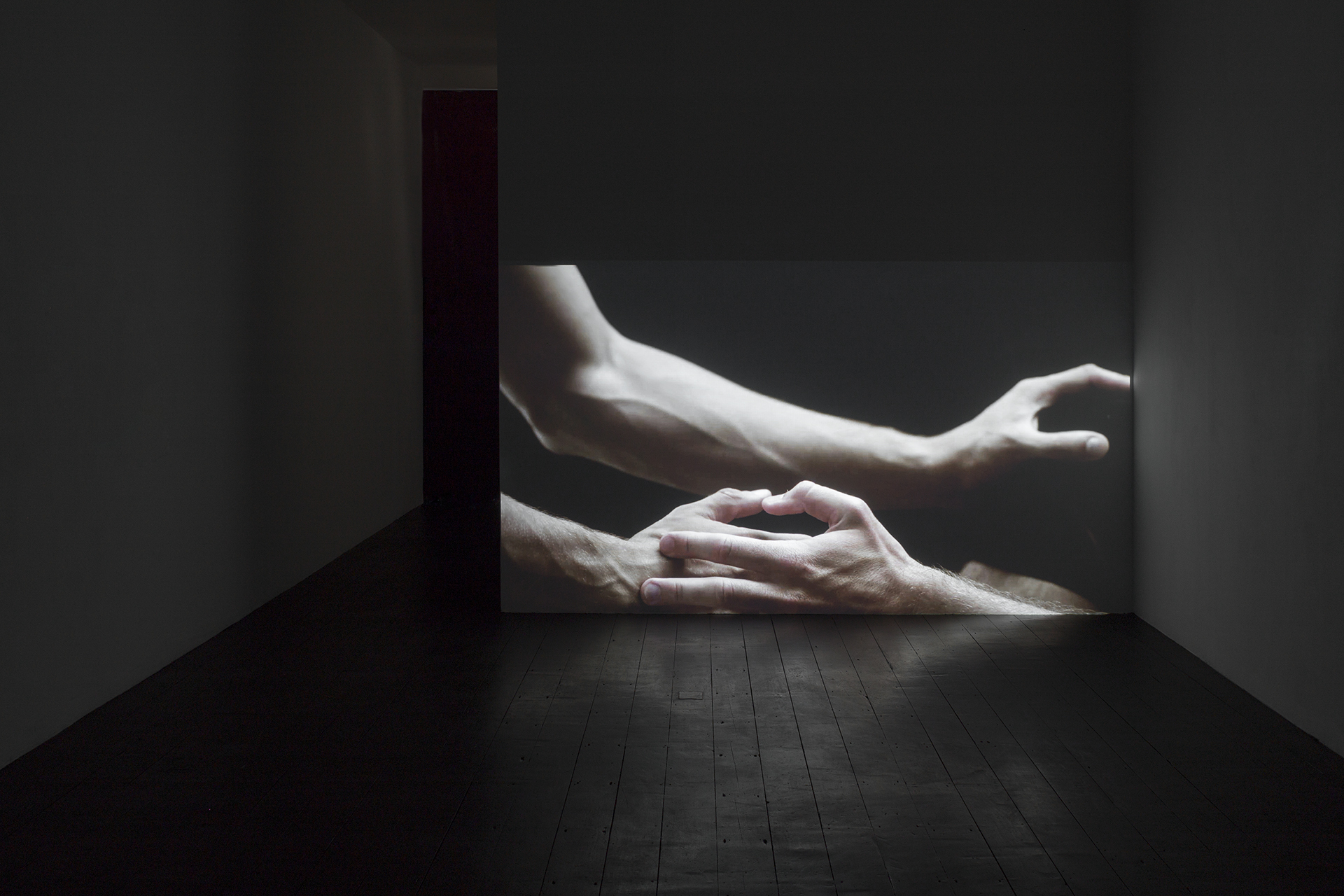
choke
,Grzegorz Stefanski
, 2017, video-installation, HD, 10’22”, dimensions variable, looped, no sound.Two Brazilian Jiu-Jitsu fighters were asked to perform their routine training gestures and positions for the camera in a studio in Warsaw. The new setting and slow-motion registration becomes a vehicle for observing the fight in a relational context.
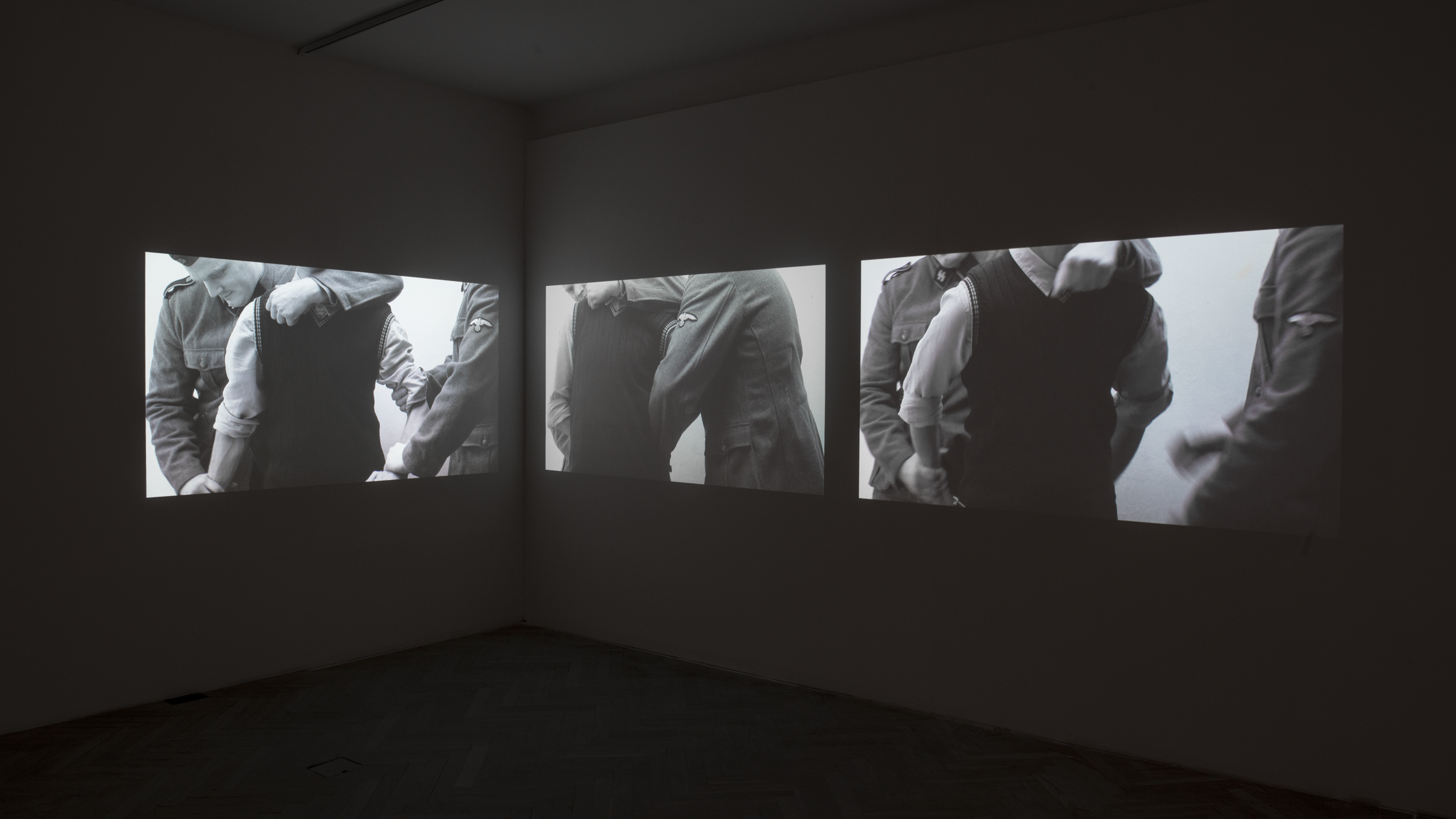
restraint
,Grzegorz Stefanski
, 2016, three-channel video installation, HD, 1’00”, dimensions variable, no sound, looped.Two men in nazis uniforms present to the camera how to incapacitate civilian with bare hands. Calm anticipation followed by position-taking, then few efficient gestures and pause at the end of the sequence. Re-enacted choreography of struggling bodies balances between theatre and documentary (participants are members of historical reconstruction groups) emphasising the role of the body as the vessel for both the good clean fun and catalyst of involuntary violence.
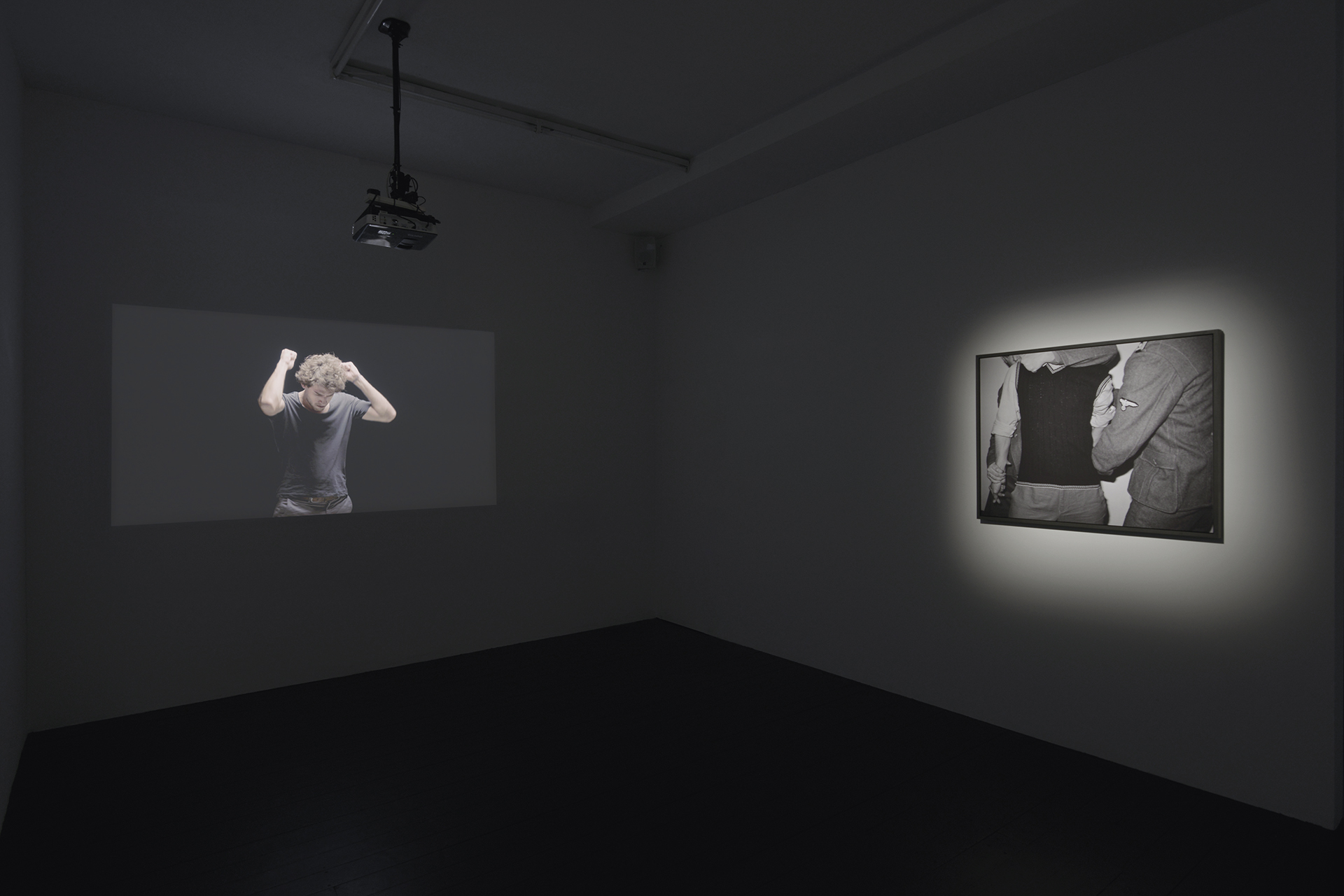
do-over
,Grzegorz Stefanski
, 2016, video-installation with sound, HD, 3’20”, dimensions variable, looped.do-over is a review of few gestures detached from score for classical music pieces. The young conductor was asked to remind those music scores and play choosen measures to the camera. Slackened moments of reminding those measures contrast with sudden bursts of the conductor’s body turning into a medium of musical force majeure. The body of conductor becomes a vessel for decontextualized and abstract gestures brought out of the memory archive.
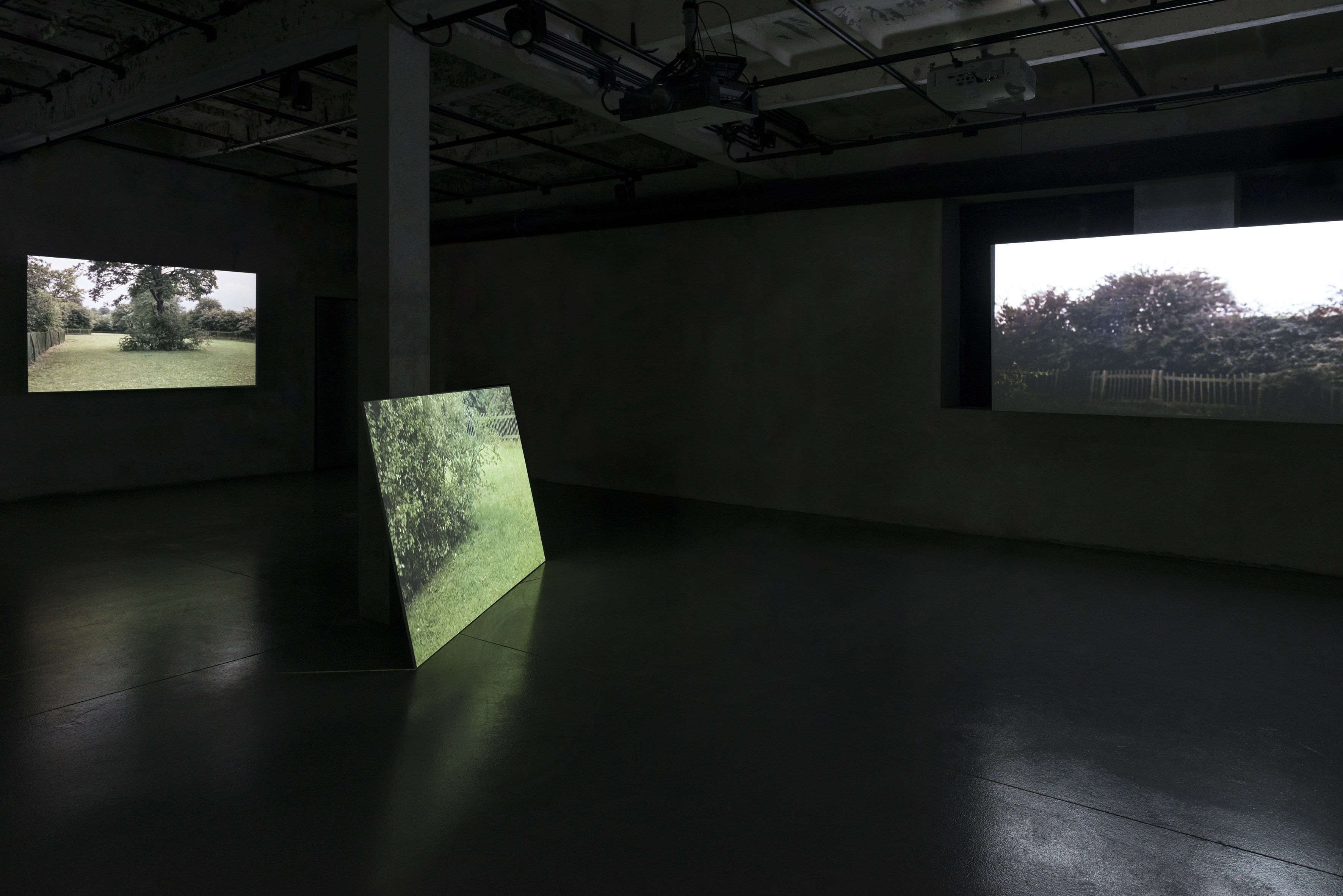
blow out
,Grzegorz Stefanski
, 2016, six-channel video installation with sound, dimensions variable, looped.The main character of Michelangelo Antonioni’s "Blow Up" has been digitally removed from the final scenes of the film. The Myriad Park sequence was broken up into six screens and set up in the exhibition space according to the logic of how it was shot. The audio sphere of the installation was the original sound from the lm which also cleaned from any sounds made by the protagonist. Both decisions - the removal of main character and blowing out the linear sequence of the lm - were made to remove guarantors of the meaning of this motion picture. The result is an ambiguous pictorial situation, familiar yet uncanny. Spectator’s sight encounters a void.
Grzegorz Stefanski
website: www.grzegorzstefanski.com
instagram: @grzegorz__stefanski
Artist's statement
Grzegorz Stefański (b. 1983) lives and works in London and Warsaw. He mainly works with time-based media and is primarily concerned with identity and embodiment. A graduate of Philosophy from Jagiellonian University and Photography at the University of Arts in Poznań. In 2016, he completed his master’s degree at Mirosław Bałka’s Studio of Spatial Activities at the Academy of Fine Arts in Warsaw. In the same year, he received the Felix Slade Award to continue his education at Slade School of Fine Art in London. In 2017, he won the Ivan Juritz Prize in London and won the Grand Prix at the 9th Biennale of Young Art "Rybie Oko" in Ustka. He made his debut in 2010 with a solo exhibition at the Goldex-Poldex Cooperative in Kraków. Since then, the works were presented, among others, in the Whitechapel Gallery in London (2018), during Manifesta 11 in Zurich (2016), at the Pastificio Cerere Foundation in Rome (2014), and at the NY Art Book Fair at MoMA PS1 in New York (2010). He has cooperated with, amongst others, Nowy Teatr in Warsaw, Królikarnia/National Museum in Warsaw, and Bunkier Sztuki in Kraków.